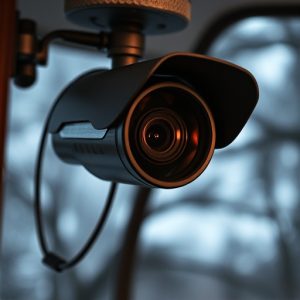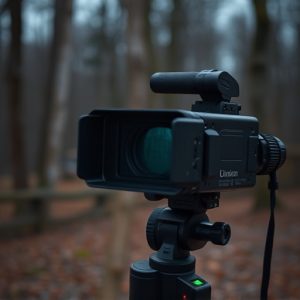Unveiling Hidden Threats: Advanced Scanning for Battery-Powered Spy Cameras Outdoors
Battery-powered spy cameras disguised as outdoor decor pose a significant privacy concern, secretly…….
Battery-powered spy cameras disguised as outdoor decor pose a significant privacy concern, secretly capturing video/audio for extended periods. Transmitting footage wirelessly, they offer real-time monitoring but raise serious privacy issues. Detecting these cameras is challenging due to their concealment and faint signals. Advanced scanning techniques using infrared sensors and signal analysis help pinpoint camera locations. Legal and ethical considerations, with varying regulations across regions, must be navigated when employing such methods.
Hidden recording devices, particularly battery-powered spy cameras, have become increasingly sophisticated. This article delves into the world of undetected surveillance by exploring advanced scanning methods for identifying these clandestine devices, especially in outdoor settings. We provide a comprehensive guide to understanding battery-powered spy cameras and discuss the legal and ethical considerations surrounding signal scanning techniques. Learn how to navigate this complex landscape and stay informed about the challenges posed by hidden recording devices outdoors.
- Understanding Battery-Powered Spy Cameras: A Quick Overview
- The Challenge of Detecting Hidden Recording Devices Outdoors
- Advanced Scanning Techniques for Uncovering Spy Cameras
- Legal and Ethical Considerations in Signal Scanning Methods
Understanding Battery-Powered Spy Cameras: A Quick Overview
Battery-powered spy cameras, often disguised as everyday items like garden rocks or outdoor decor, are a growing concern for privacy advocates. These devices are designed to operate secretly, capturing video and audio without detection for extended periods. Typically powered by rechargeable batteries, they can remain active for days or even weeks, making them particularly effective in outdoor surveillance scenarios.
Understanding the operation of these cameras is crucial for consumers. They usually employ wireless transmission methods like Wi-Fi or Bluetooth to send footage to a connected app on a smartphone or computer. This real-time monitoring capability makes them attractive for security purposes but raises significant privacy red flags. With their increasing availability, it’s essential for outdoor enthusiasts and homeowners alike to be aware of the potential risks associated with battery-powered spy cameras to safeguard their personal spaces.
The Challenge of Detecting Hidden Recording Devices Outdoors
Detecting hidden recording devices outdoors presents a unique challenge due to the vastness and complexity of outdoor environments, making it easier for covert cameras to remain concealed. Battery-powered spy cameras, often disguised as everyday items like rocks or plants, can operate discreetly for extended periods, capturing video or images without suspicion. The signals these devices emit are designed to be faint and hard to trace, especially in areas with high radio frequency (RF) interference from nearby electronics or environmental factors like trees and buildings.
Traditional scanning methods may not be effective against these sophisticated hidden cameras because they rely on line-of-sight detection and can be easily obstructed by natural or artificial barriers. To overcome this, advanced signal scanning techniques are required, such as directional antennas and specialized software that can analyze and pinpoint the unique RF signatures of these devices.
Advanced Scanning Techniques for Uncovering Spy Cameras
In the quest to uncover hidden recording devices, especially battery-powered spy cameras in outdoor settings, advanced scanning techniques have emerged as powerful tools for security professionals and privacy advocates alike. These methods go beyond traditional visual inspections, employing cutting-edge technology to detect even the most sophisticated surveillance equipment. One such technique involves the use of specialized infrared (IR) sensors that can penetrate obstacles like walls and foliage, revealing the heat signature of active cameras. This approach is particularly effective for night-time operations, as IR technology excels in low-light conditions, allowing for the identification of hidden spy cameras mounted outdoors.
Additionally, signal scanning methods have been refined to intercept wireless data transmissions from these devices. By analyzing radio frequency (RF) patterns and protocols, experts can triangulate the location of a battery-powered spy camera. This approach is especially useful in urban environments where dense structures can obstruct line-of-sight visibility but do not impede RF signals. With continuous advancements in scanning technology, professionals now have a robust arsenal to combat the ever-evolving tactics employed by covert surveillance devices, ensuring a safer and more secure outdoor space for individuals and organizations alike.
Legal and Ethical Considerations in Signal Scanning Methods
When employing signal scanning methods for hidden recording devices, such as battery-powered spy cameras outdoors, it’s paramount to navigate a complex web of legal and ethical considerations. The use of such technology raises privacy concerns, as it allows for covert monitoring and potential invasion of personal spaces. Many countries have strict regulations regarding surveillance, with laws varying significantly across jurisdictions. For instance, some regions strictly prohibit the use of hidden cameras without explicit consent, while others allow limited use for security or investigative purposes.
Ethical dilemmas also emerge when considering the implications of undetected recording. The potential for abuse is a significant worry, as these devices can capture intimate moments or sensitive information. As technology advances, it becomes increasingly important to strike a balance between legitimate security needs and individual privacy rights. Users must be mindful of local laws and ethical guidelines to ensure responsible and legal use of signal scanning methods involving hidden recording devices.
In conclusion, the detection of battery-powered spy cameras, especially outdoors, presents a unique challenge due to their clandestine nature. However, advanced scanning techniques, such as signal analysis and specialized equipment, can help uncover these hidden devices. It’s crucial to balance the use of these methods with legal and ethical considerations, ensuring privacy rights are respected while navigating the growing concern of surveillance technology. Understanding the dynamics of battery-powered spy camera detection is essential for both individuals seeking to protect their privacy and authorities aiming to regulate this evolving technology.

